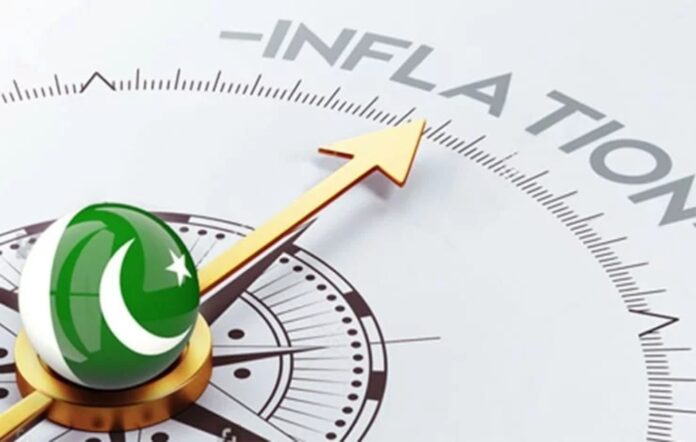The fight against inflation in Pakistan FY 2024 reflects an economy struggling with uncertainty despite recent glimmers of hope. Inflation was averaging 26% between July and April, which, although a slight decline from the previous year’s 28.2%, has seen a dramatic decrease in year-on-year inflation from 36.4% in April 2023 to 17.3% in April 2024. Yet, these statistics hide a tale of woe, as lived by the ordinary Pakistani.
Root Causes of Rising Prices
The root causes of this crisis are multi-faceted. Supply-demand imbalances, soaring energy prices, and currency depreciation are the top culprits. However, global factors, like the Russia-Ukraine conflict, which disrupted supply chains, added to the domestic challenges, such as the devastating 2022 floods. These forces combined to push basic necessities, from food to fuel, out of reach for many. Wheat flour and rice, among other basic items, saw alarming price hikes, which were quite skewed toward the lower-income class.

Food and energy price hikes increased by 28.4% because of steep tariffs and a weakened rupee. It’s devastating for families stretched at the seams. Even some comfort is found in better crop yields and falling global commodity prices; food inflation in Pakistan remains unrelenting with fresh food rising by 18.5% in FY 2024.
Government Interference: A Step Forward but Not Enough
Government measures, such as the more substantial Ramadan Relief Package and an intensified crackdown on hoarding and smuggling, provide some relief but hardly tackle systemic issues. Since stabilising, the exchange rate has already eased inflationary pressure. It is more or less akin to applying a bandage on a wound that needs surgery.
Read More: Pakistan to Reduce Inflation to 7% by 2027: Finance Ministry
Pakistan needs bold, long-term economic reforms. Structural inefficiencies, dependence on imports, and underperforming agriculture need to be addressed aggressively. Energy policies need an overhaul for sustainable and affordable supply. Domestic production investment, especially in agriculture, can reduce dependency on volatile global markets.

Based over the official document for the year 2024 on Finance.gov.pk, here is a detailed analysis of Pakistan’s inflation during FY 2024, focusing on the trends, causes, and government actions to manage rising prices.
1. Overall Inflation Trends in Pakistan:
CPI Inflation: During the period from July-April FY 2024, the Consumer Price Index (CPI) inflation was recorded at 26.0%, which marks a slight improvement from 28.2% during the same period last year.
Year-on-Year Changes: Year-on-year (YoY) inflation dropped to 17.3% in April 2024 from 36.4% in April 2023, representing a significant reduction. In March 2024, inflation stood at 20.7%, so the April numbers reflect a marked month-on-month decline. Similarly, month-on-month (MoM) inflation dropped from an increase of 1.7% in March 2024 to just 0.4% in April 2024.
Inflation Peaked in 2023: Pakistan saw a peak in inflation at 38% in May 2023, which was one of the highest levels recorded.
2. Causes of Inflation in Pakistan:
Supply-Demand Imbalance: The primary driver of inflation in Pakistan was the imbalance between demand and supply. Excessive demand for goods and services, combined with supply-side constraints, led to higher prices.
Energy Prices: Rising energy prices, largely due to currency depreciation and global oil price fluctuations, played a significant role. Energy costs for households (including electricity and gas) increased by 28.4% in FY 2024, compared to 13.6% in FY 2023.
Import Costs: The exchange rate depreciation worsened inflation by increasing the costs of imported goods and services. Non-perishable food items, for example, saw a 26.7% price increase during July-April FY 2024 compared to 36.4% the previous year.
Global Factors: The global disruptions caused by the Russia-Ukraine conflict exacerbated food and energy supply chain issues. Additionally, inflation was driven by domestic economic conditions such as currency depreciation and 2022 floods, which severely impacted agricultural output.
3. Sector-specific Impact:
Food Inflation: Food inflation remained high, though it saw some relief due to improved domestic crop yields and declining global commodity prices. Non-perishable food items increased by 26.7%, while perishable items saw an increase of 18.5% compared to a 47.0% rise last year. Essential food items like tomatoes, onions, and potatoes saw significant price hikes.
Housing and Energy: Inflation in the Housing, Water, Electricity, Gas, and Other Fuels category surged by 28.4% in FY 2024, a substantial rise from 13.6% in the previous year. This increase is attributed to higher energy tariffs and the depreciation of the Pakistani Rupee.
4. Government Measures to Curb Inflation in Pakistan:
Ramadan Relief Package: The government enhanced the Ramadan Relief Package from PKR 7.5 billion to PKR 12.5 billion, providing essential items at subsidized rates.
Price Control Efforts: Federal and provincial governments intensified administrative measures, including crackdowns on illegal foreign exchange operations, hoarding, and smuggling. These measures contributed to stabilizing exchange rates and ensuring smoother supply chains.
Exchange Rate Stability: Actions taken to control illegal foreign exchange activities helped stabilize the exchange rate, further easing inflationary pressures.
5. Core Inflation:
Urban Core Inflation: During the period July-April FY 2024, core inflation (which excludes volatile food and energy prices) in urban areas was recorded at 16.9%, while rural core inflation was higher at 24.0%. This was a slight increase from the previous year’s urban core inflation of 15.6% and rural core inflation of 19.4%.
6. Wholesale Price Index (WPI):
The Wholesale Price Index (WPI) saw a decline from 27.3% in December 2023 to 13.9% in April 2024. Overall, WPI inflation rose by 22.4% during July-April FY 2024, compared to 34.1% during the same period last year. This reduction in wholesale inflation is attributed to reduced pressures on food and energy prices.
7. Sensitive Price Indicator (SPI):
The Sensitive Price Indicator (SPI), which tracks the prices of essential commodities weekly, showed a YoY increase of 30.2% during July-April FY 2024, compared to 31.7% last year.
Major food items like wheat flour, rice, and sugar contributed significantly to the increase in SPI.
8. Global Context:
Global commodity prices also played a role in shaping domestic inflation in Pakistan. While prices of items like palm oil and soybean oil decreased by 6.9% year-on-year in April 2024, items like crude oil and rice saw price increases of 7.1% and 19.7%, respectively.
9. Future Outlook:
The report forecasts a further decline in inflation for FY 2024, expecting it to fall within the 23-24% range. The decline is attributed to a combination of fiscal consolidation, better global commodity prices, and stable food supplies. Political stability and steady exchange rates are also expected to contribute to this trend.
In the medium term (FY 2025 and FY 2026), inflation is expected to normalize further as the agriculture sector improves and global and domestic conditions stabilize.
If you want to learn more about last year’s financial report then feel free to download the complete document here.
Human Cost of Inflation
Inflation is not just an economic burden but a deep social one. It eats away at trust in institutions, fuels inequality, and destabilises communities. While inflation forecasts point to a gradual decline to 23-24% in FY 2024, complacency is not an option. Policymakers must seize this moment to implement transformative policies that prioritise the welfare of the most vulnerable while building resilience against future shocks.
The fight against inflation is not a fight of numbers; it is a fight for the dignity and survival of millions. Pakistan cannot afford half-measures but requires a bold vision and unwavering commitment to secure a stable and prosperous future.
Stay tuned to Brandsynario for latest news and updates.





































